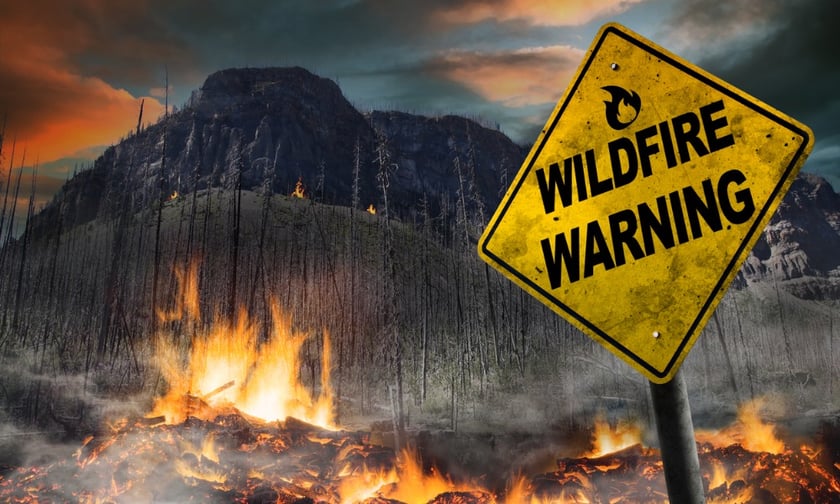

Following last year’s 5,475 wildfires in Canada that spanned a record-breaking 17.3 million hectares, insurance comparison website MyChoice launched a study to pinpoint cities at higher wildfire risk in 2024.
To determine the cities most at risk, MyChoice used two key metrics across the critical fire season months from May to September: the Forecast Severity Rating (FSR) and the Forecast Severity Anomaly (FSA). These metrics, sourced from the Canadian Wildland Fire Information System’s monthly and seasonal forecast, measure predicted wildfire severity conditions.
The FSR, rated from 1 to 5, indicates low to extreme risk, while the FSA compares forecasted severity to historical averages, also rated from 1 to 5. The overall risk score for each city was calculated by combining the two metrics’ equally weighted average from May to September.
Kamloops leads the list with a risk score of 9.4/10, indicating extreme wildfire risk due to its high FSR and significantly above-average FSA. Cities like Saskatoon, Regina, Kelowna, and Medicine Hat also exhibit elevated wildfire risks, marking them as areas of concern for this year.
Here’s the list published by MyChoice:
|
City |
Risk score (out of 10) |
|---|---|
|
Kamloops |
9.4 |
|
Saskatoon |
8.8 |
|
Regina |
8.6 |
|
Kelowna |
8.6 |
|
Medicine Hat |
8.6 |
|
Lethbridge |
8.4 |
|
Grande Prairie |
8.4 |
|
Fort McMurray |
8.0 |
|
Winnipeg |
7.8 |
|
Prince George |
7.4 |
|
Edmonton |
7.0 |
|
Vancouver |
6.6 |
|
Calgary |
6.2 |
|
Red Deer |
5.8 |
|
Timmins |
5.4 |
|
Kenora |
5.4 |
|
Sault Ste Marie |
5.4 |
|
Barrie |
5.2 |
|
Sudbury |
5.2 |
|
Gravenhurst |
5.2 |
MyChoice chief executive Aren Mirzaian commented: “While we are seeing insurance companies in the US pulling out of high-risk areas due to the increasing frequency and severity of wildfires, especially in California, the situation in Canada remains different.
“In Canada, the insurance market has shown resilience, and we have not yet reached the point where insurers are withdrawing coverage. However, the unprecedented scale of wildfires last year is a clear warning signal. We need to be proactive in understanding the risks and ensuring that Canadian home insurance offerings are robust enough to provide adequate coverage in these challenging times.”
What do you think about this story? Share your thoughts in the comments below.
